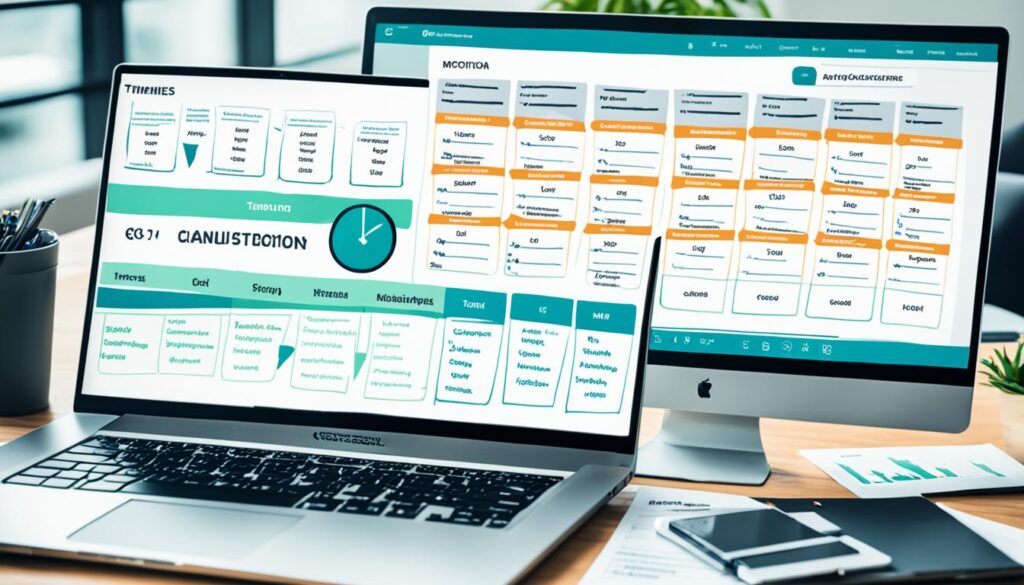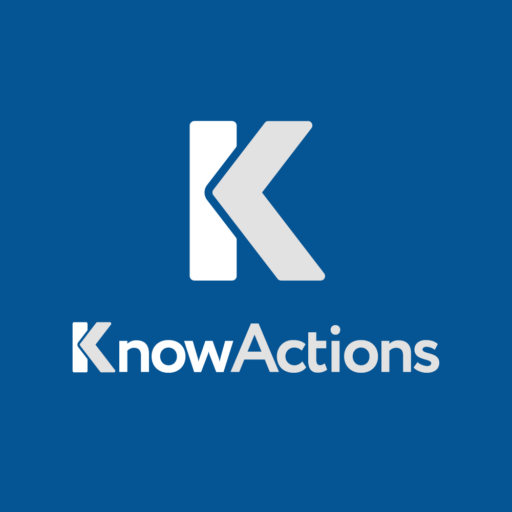Did you know that a staggering 55% of meeting attendees believe setting clear objectives is crucial for meeting success1? This statistic highlights the significance of effective meeting management in today’s fast-paced business landscape. Leaders aiming to boost meeting efficiency and encourage productive discussions must master the art of running successful meetings. This skill has become essential for leadership.
In highly effective team meetings, goals are set and expectations are made clear, enhancing productivity and fostering accountability among team members2. By adopting strategic meeting management strategies, leaders can turn these meetings into powerful tools for collaboration and decision-making.
With 74% of participants noting that a well-structured agenda positively impacts meeting productivity, it’s evident that proper planning is crucial1. By focusing on meeting efficiency, encouraging productive discussions, and refining leadership skills, leaders can ensure meetings propel progress rather than obstruct it.
Key Takeaways
- Clear objectives are essential for meeting success
- Well-structured agendas boost productivity
- Effective meetings require proper planning and management
- Leadership skills play a crucial role in running productive meetings
- Accountability and clear expectations enhance team performance
The Importance of Meeting Efficiency
Meeting efficiency is vital for organizational success in today’s fast-paced business world. Time is a precious resource. How meetings are conducted directly impacts effective time management and employee productivity.
The Cost of Unproductive Meetings
Unproductive meetings can severely drain company resources. A McKinsey survey found that 61% of executives believe half their decision-making time is ineffective3. This inefficiency goes beyond just wasting time. Companies with 500 or more employees spend 17% of their time in meetings, underscoring the need for better meeting efficiency4.
Impact on Employee Morale and Productivity
Inefficient meetings harm employee morale and productivity. People attend an average of 62 meetings monthly, with over half deemed a waste of time5. Such constant interruptions can disrupt focus, crucial for team productivity. Research indicates focus time, energy, coordination, and cooperation are essential for productivity5.
Benefits of Efficient Meetings
Efficient meetings can greatly enhance organizational performance. Executives who manage their time well spend 34% with external stakeholders, 39% in internal meetings, and 24% alone3. Setting meeting ground rules, sharing agendas beforehand, and having facilitators can improve meeting efficiency5. These steps ensure engagement, focus on relevant topics, clarity, and alignment, propelling teams forward efficiently and effectively.
| Meeting Aspect | Inefficient Meetings | Efficient Meetings |
|---|---|---|
| Time Usage | 50% ineffective time | Balanced time allocation |
| Decision Quality | 37% high-quality decisions | Improved decision-making |
| Employee Satisfaction | Low morale | Higher engagement |
| Productivity Impact | Disrupted focus time | Enhanced team productivity |
By focusing on meeting efficiency, organizations can improve time management, boost employee productivity, and drive better business outcomes.
Defining Clear Meeting Objectives
Clear meeting objectives are essential for productive meetings. They guide discussions, keep everyone focused, and help achieve results. It’s vital to set specific, measurable goals for meeting success6.
Effective goal setting means identifying what you want to achieve and using clear language. It’s crucial to set measurable metrics for each goal6. This method follows the SMART framework, which stands for Specific, Measurable, Achievable, Relevant, and Time-bound objectives7.
Meetings have different goals. Brainstorming aims to create new ideas, while decision-making meetings aim for consensus. Problem-solving meetings tackle workplace problems, and planning meetings oversee projects6.
To set clear objectives, follow these steps:
- Identify the meeting’s purpose
- Outline specific goals
- Communicate objectives clearly
- Ensure all participants understand the goals
Defining a meeting’s purpose clearly prevents wasting time. A study showed that employees spend about 31 hours a month on unproductive meetings8. Clear objectives can cut down on this time and increase productivity.
“A meeting without a clear purpose is like a ship without a destination – it may sail, but it won’t get anywhere meaningful.”
Effective meeting objectives should be shared through emails, memos, and digital platforms. This helps increase engagement and participation7.
| Meeting Type | Primary Objective |
|---|---|
| Brainstorming | Generate innovative ideas |
| Decision-making | Reach consensus on key issues |
| Problem-solving | Address specific workplace challenges |
| Planning | Outline project strategies and timelines |
By applying these principles of meeting objectives and goal setting, you can turn your meetings into productive, goal-driven sessions. This will help your organization move forward.
Creating an Effective Meeting Agenda
A well-structured agenda is crucial for productive meetings. It can turn your gatherings into valuable sessions. Sadly, 63% of meetings lack a pre-planned agenda, resulting in time waste and unfocused discussions9.
Key Components of a Successful Agenda
A successful agenda clearly outlines goals, lists attendees, and assigns topics. It should detail clear objectives, time slots for each item, and expected outcomes9. Using question-based agendas can drive focused outcomes and engage participants effectively9.
- Meeting objectives
- Attendee list
- Discussion topics with time allocations
- Expected outcomes

Distributing the Agenda in Advance
Sharing the agenda beforehand ensures everyone is prepared and aligned10. It allows team members to gather necessary information and come ready with ideas. For best results, distribute the agenda and any background materials at least 24 hours in advance.
Allowing for Agenda Feedback
Inviting participant input makes for more comprehensive and engaging agendas10. Encourage team members to suggest additions or changes to the agenda. This approach ensures all necessary topics are covered and boosts engagement.
By adopting these strategies for agenda management and meeting preparation, you can greatly enhance your team’s productivity. Remember, effective time allocation and a well-crafted agenda are essential for successful meetings that respect everyone’s time and drive results.
Selecting the Right Participants
Choosing the right meeting participants is essential for maximizing productivity. Research indicates that only half of meeting time is utilized effectively, highlighting the importance of strategic team selection11. It’s crucial to keep the number of attendees small, with most productive meetings involving fewer than eight people12.
- What are the meeting goals?
- Who can help achieve these goals?
- Who will be affected by the outcomes?
- Who are the key decision-makers?
Jeff Bezos at Amazon introduced the ‘two pizza rule’, suggesting meetings should not exceed the number of people who can be fed by two pizzas12. This principle ensures focus and engagement in discussions.
Effective attendance management requires assigning specific roles. Include a leader for each agenda item, a minute-taker, and someone responsible for organization and follow-up12. Roles like ‘Customer Advocate’ can enhance participation in team meetings12.
| Meeting Role | Responsibility |
|---|---|
| Agenda Item Leader | Guide discussion on specific topics |
| Minute-Taker | Record key points and decisions |
| Organizer | Handle logistics and follow-up tasks |
| Customer Advocate | Represent client interests in discussions |
By prioritizing quality over quantity in team selection and defining clear roles, you can dramatically enhance meeting effectiveness and outcomes.
Time Management Strategies for Meetings
Effective time management is key to productive meetings. In the UK, workers lose an average of 13 days annually in meetings, with executives spending over two days weekly preparing for them13. To address this, adopting smart strategies can greatly enhance efficiency.
Setting and Adhering to Time Limits
Clear objectives and adhering to time limits can boost meeting productivity by up to 80%14. Starting and ending meetings on time sets a positive tone. Keeping meetings under an hour helps maintain focus and engagement.
Using Time-Tracking Tools
Time-tracking tools are vital for efficient meetings. They monitor meeting duration and keep discussions focused. By optimizing processes, you can shorten meetings by 25% and increase efficiency by 30%14.
The Two-Pizza Rule for Meeting Size
Amazon’s “two-pizza rule” advises limiting attendees to what two pizzas can feed. This method controls meeting size and duration. Stand-up meetings can reduce meeting time by a third while enhancing engagement.
| Time Management Technique | Potential Improvement |
|---|---|
| Clear Objectives and Agendas | 80% increase in productivity |
| Streamlined Processes | 25% reduction in duration |
| Effective Communication | 30% increase in efficiency |
| Optimized Time Management | 20% improvement in outcomes |
By applying these time management strategies, you can overcome common challenges and see a 15% increase in meeting effectiveness14. The aim is to make meetings more productive, not just shorter.
Facilitating Productive Discussions
Effective Meeting Leadership relies on the mastery of Facilitation Techniques that promote Inclusive Discussions. A proficient facilitator ensures every voice is heard and maintains the meeting’s focus15.

- Set clear objectives and share the agenda in advance
- Encourage participation from all attendees
- Use round-robin techniques to include everyone
- Establish ground rules for technology use and questions
Rotating facilitators can significantly enhance team dynamics and morale. Data-driven discussions ensure decisions are grounded in facts, not assumptions16.
“A well-facilitated meeting is like a symphony – every instrument has its moment to shine, creating harmony in decision-making.”
Recognizing achievements motivates success. Research indicates that 83.6% of employees find recognition a key driver of their performance16. This method boosts team morale and meeting productivity.
| Facilitation Technique | Purpose | Impact |
|---|---|---|
| Round-robin discussions | Include all participants | Diverse perspectives |
| Time management | Keep meetings focused | Improved efficiency |
| Recognition | Motivate team members | Increased engagement |
By adopting these Facilitation Techniques, leaders can craft Inclusive Discussions that boost productivity and cultivate a positive team culture.
Leveraging Technology in Meetings
Technology is key to boosting meeting productivity. The right tools enable teams to collaborate more effectively, leading to better outcomes. Let’s delve into how technology can enhance meetings.
Collaboration Tools for Enhanced Productivity
Collaboration tools are vital for productive meetings. Sharing agendas and documents early leads to more effective discussions17. Tools like Asana streamline the meeting process, ensuring everyone is aligned17.
Best Practices for Video Conferencing
Video conferencing is now common in many organizations. 45% of teams use virtual tools for daily or weekly meetings18. To excel in these platforms:
- Test the platform beforehand to prevent technical problems
- Use video-on policies to enhance human interaction
- Utilize features like polls, chats, and interactive whiteboards
- Consider time zones when setting up global team meetings
Managing Hybrid Meetings Effectively
Hybrid meetings combine in-person and remote participants, requiring careful management. To excel:
- Choose tools like Microsoft Teams for smooth remote participation18
- Establish clear ground rules for roles and expectations18
- Break meetings into shorter segments to keep everyone engaged18
- Use online whiteboards and screen sharing for enhanced collaboration18
By adopting these technologies and best practices, leaders can significantly boost meeting productivity. The choice of platform depends on the meeting’s goals, audience size, and participant comfort17. With the right strategy, technology can turn meetings into productivity drivers.
Follow-Up and Action Item Tracking
Effective follow-up is essential for success. Distributing meeting minutes quickly and tracking action items are critical steps. Teams that focus on follow-up tend to see a 64% increase in productivity19.
Tracking action items is crucial for advancing on set goals. It keeps teams structured and responsible. Companies with a robust culture of accountability tend to perform 2.5 times better19.
To ensure effective follow-up, assign specific roles to individuals. This approach prevents confusion and boosts accountability. Teams that work well together are five times more likely to excel19.
When drafting Meeting Minutes, make sure to include clear action items with due dates and owners. This method strengthens action points and shows attendees their input matters. As teams expand, clear action items become key for tracking20.
| Action Item Component | Purpose |
|---|---|
| Task Description | Clearly define the action required |
| Assigned Owner | Establish accountability |
| Due Date | Set clear timeline for completion |
| Priority Level | Help team members prioritize tasks |
Using meeting management software can streamline tasks, prioritize them by urgency, and track progress effectively. This method ensures incomplete items are carried forward, facilitating easy review and reevaluation of priorities20.
Conclusion
Mastering meeting efficiency is essential for leaders aiming to boost organizational productivity. Research shows a stark truth: about 51% of meetings are deemed poor, with leaders rating their own meetings at just 4 out of 102122. This highlights the pressing need for better meeting management.
To fight against meeting stagnation, leaders must push discussions forward with clear actions and decisions21. Using structured formats like the Level 10 meeting can greatly improve productive dialogue. This 90-minute format dedicates specific times for each agenda point, ensuring thorough coverage while keeping things efficient22.
By embracing these strategies and regularly assessing meeting outcomes with tools like C.A.T.S. (Conclusion, Advancement, Termination, Stagnation), leaders can continually enhance their meeting practices21. Effective meetings are not solely about managing time. They’re about creating a space where ideas thrive, decisions are made, and team members feel valued and engaged.




